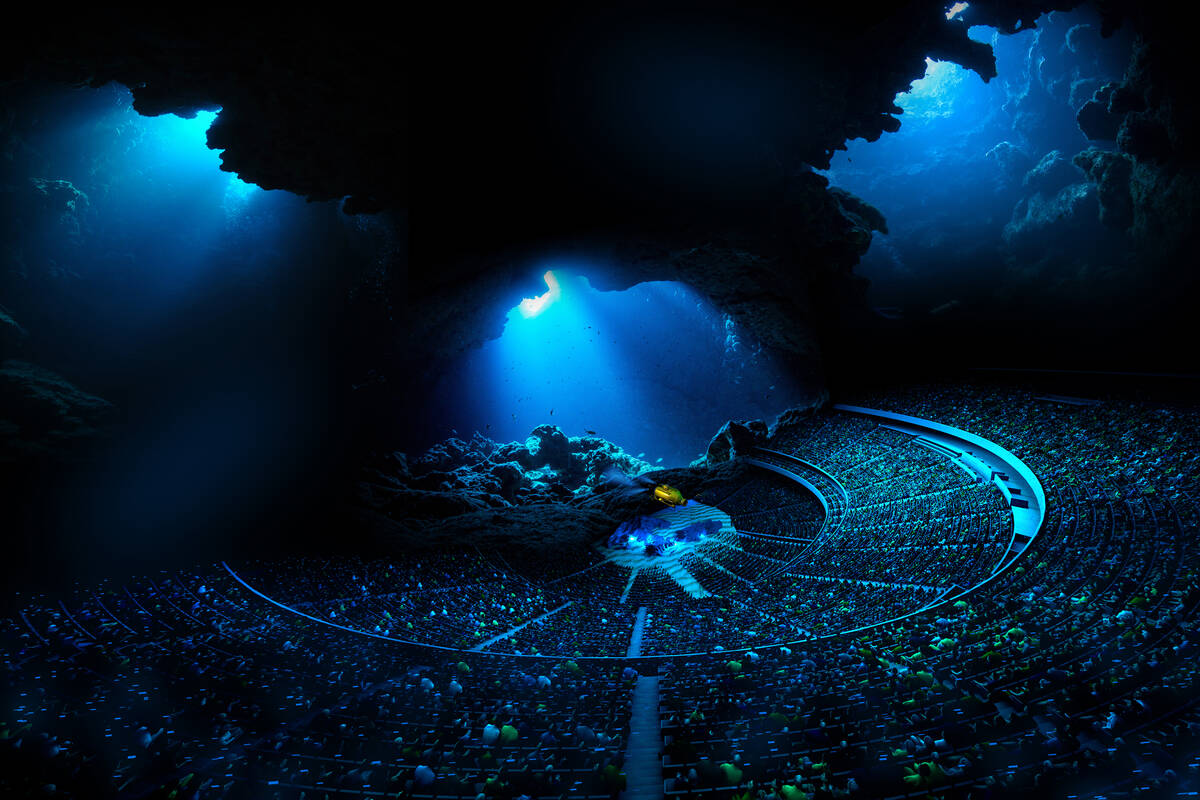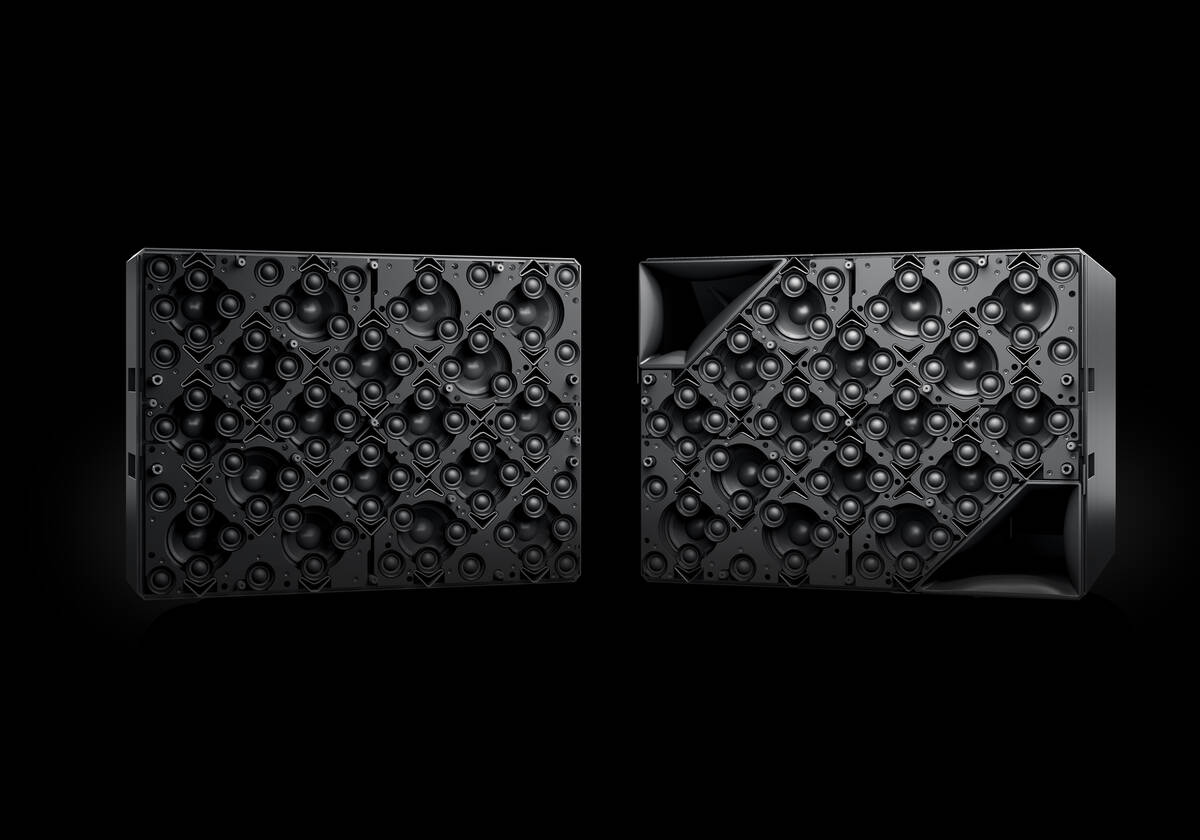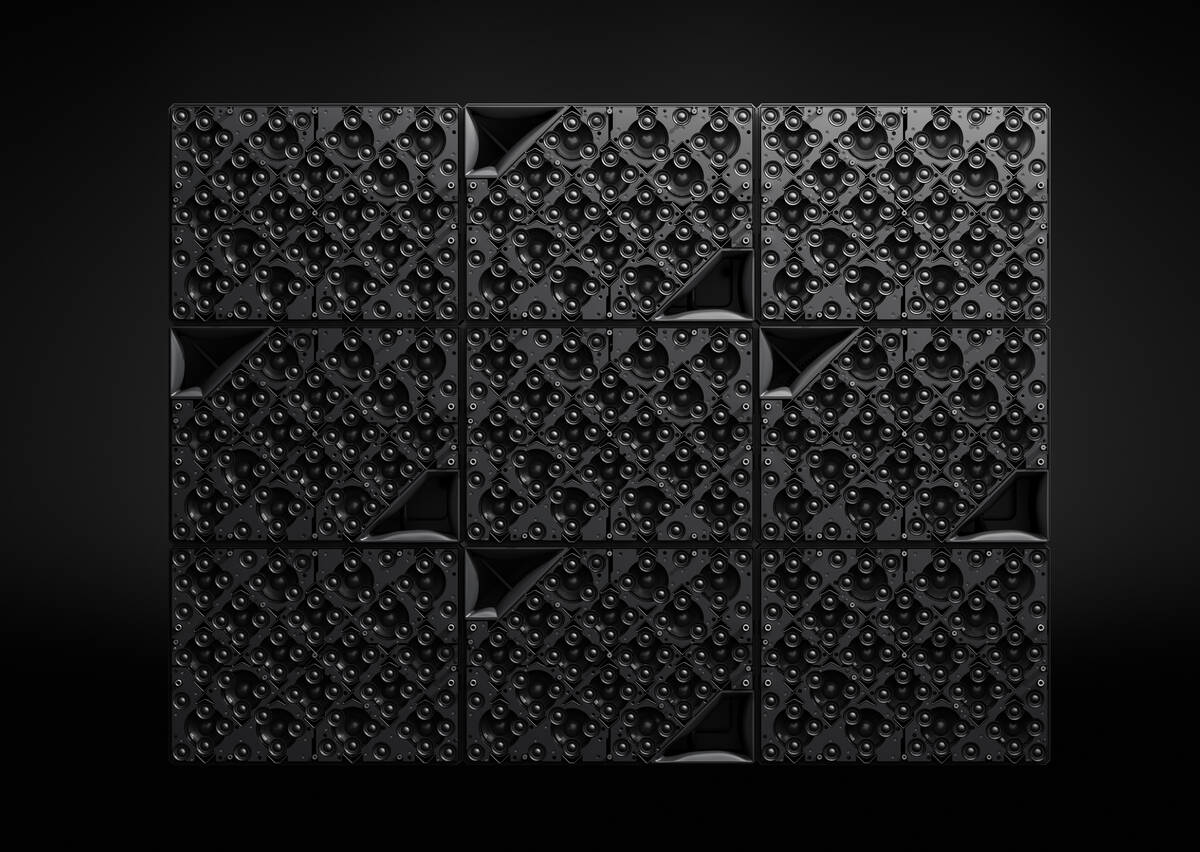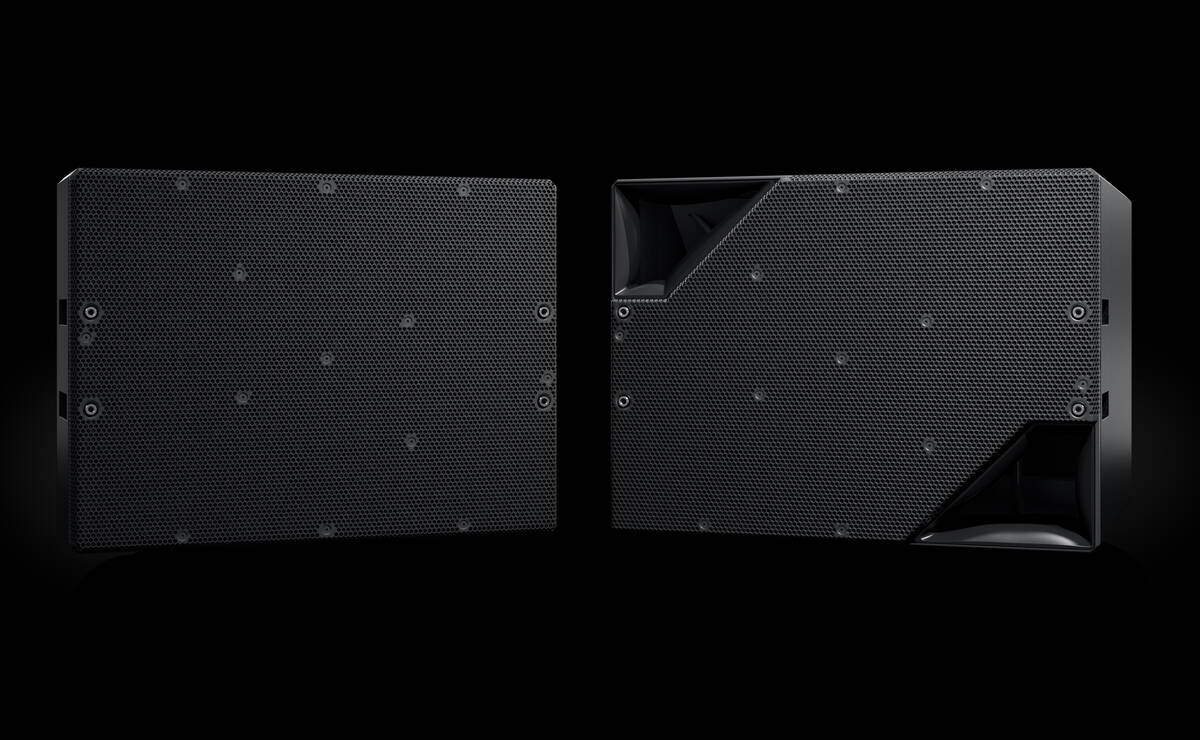‘The things you can do in here, it’s incredible’: The first look at Sphere Immersive Sound
It’s as if he’s whisper-singing the words directly into your ear, the only thing missing is his breath upon your neck.
“One man come in the name of love / One man come and go.”
Bono’s serenading an empty room full of sound.
The U2 frontman will be playing here in the flesh soon enough, but for now, an acoustic recording of his band’s rousing concert staple “Pride (In The Name of Love)” delivered with crystalline, all-encompassing clarity, makes it feel as if he’s already taken the stage.
His vocals emanate from down in front, but quickly become enveloping, his voice the silk in a sonic cocoon being spun around us.
When the guitar solo kicks in, it’s as if a miniaturized, “Honey, I Shrunk The Kids”-version of The Edge is ripping said lead from within the depths of your ear canal.
Next up comes a highly-textured tune by funk rockers Tauk: it’s a layer cake of sound — clattering hi-hat, pinpricks of guitar, digital squiggles and electro zaps — but its nuances are so crisply, clearly audible, it’s like sampling some complex dish with a highly elaborate recipe and being able to taste every ingredient, right down to that last pinch of paprika.
The experience is akin to hearing the song in pair of high-end, studio-grade headphones — sans the headphones.
In their place: a concert hall.
But not just any concert hall: we’re seated in the $2.3 billion Sphere, that massive glowing orb just blocks from the Strip that’s been hyped as the next big thing in Las Vegas entertainment — or anywhere else, for that matter — since ground was broken on the gargantuan venue in 2018.
As the world’s largest spherical structure at 516 feet wide and 366 feet tall, it’s fittingly outfitted with the world’s largest concert-grade audio system, Sphere Immersive Sound, which boasts 1,586 loudspeaker modules, 167,000 speaker drivers, amplifiers and processing channels and a total weight of 395,120 pounds.
Designed by Sphere Studios and German company Holoplot, the system’s powered by pioneering, 3D audio-beamforming and Wave Field Synthesis technology with the remarkable capability of directing — or excluding — sound to specific parts of the room, aimed at generating an individualized listening experience for everyone in the house.
“What we have created is as close — I think — as you can get to the replication of the human sense of sound,” says James Dolan, executive chairman and CEO of MSG Entertainment Corp, wearing a blue sport coat, white shirt, matching pants and a look of pride at what he’s built here.
It wasn’t easy.
“There were a lot of obstacles in the programming of a space like this,” Dolan notes.
Namely?
“You may have noticed,” says David Dibble, CEO of MSG Ventures, “that the building is round.”
On German train stations and precision sound
He calls the design of the place the stuff of nightmares for any acoustical engineer — and Roman Sick knows whereof he speaks.
The Holoplot CEO is addressing the complexities of attempting to deliver high-quality concert sound in a venue shaped like a giant bowling ball.
The problem is that the sound goes everywhere — and thus nowhere, a musical dead end.
But Sick has experience in making things work amid less-than-ideal surroundings.
Case in point: His company first made a name for itself after being hired by the German government to install its audio systems in train stations throughout the country, successfully managing to clearly project music or messages in over a dozen different directions at once amid roaring trains and acres of concrete.
“You talk about a challenging audio environment,” Dibble notes.
Holoplot was recruited by MSG to execute a straightforward, yet difficult task: “Build a sound system that’s not dominated by the space it’s in,” Sick explains.
To do so meant tackling a central question.
“How can we control sound in space as much as possible?” Sick says.
The answer came via audio beamforming technology and Wave Field Synthesis, which Holoplot spent 10 years researching and developing. The company was founded in 2011 in a garage outside of Berlin because they couldn’t afford the higher rents in the big city at the time.
It works by using specially designed software algorithms to generate more efficient soundwaves than conventional speakers, which can then be directed at specific locations in the venue. This means that different content can be delivered to different sections of the hall — for instance, one part of the room could hear singing in another language or experience a sound effect unique to where they’re sitting.
Artists, then, can play with the sound system in the same way that they play with their instruments.
Moreover, at a traditional concert hall, what you hear is predicated upon where you’re sitting: if you’re on the right side of the room, you hear the speakers on the right side; if you’re on the left side, vice versa. With Sphere Immersive Sound, audio beams from the left, right and center speakers reach every seat.
Sick shares an analogy to help explain the technology in layman’s terms.
Think of what you hear at a standard concert set-up as a stone dropped into a body of water, sound waves rippling out in all directions simultaneously.
“We are not dropping one stone,” he says, “we are dropping a hundred — to form a unified wave.”
The system also flattens sound waves so that they’ll travel further with no loss in sound level, forming a consistent signal.
And so whether you’re sitting in the front row or up in the rafters, the volume and clarity of the sound will be exactly the same.
“It’s so accurate, that I think some musicians will find it daunting,” Dolan contends. “If you sing a wrong note, everyone will hear it.”
‘The things you can do in here, it’s incredible’
“The seats are not made of human skin.”
Good to know, but OK.
David Dibble’s discussing the special fabric that encases the chairs in the 20,000-capacity Sphere.
It’s designed to replicate the reflective properties of human flesh — albeit without harming any locals, as Dibble clarifies.
As a result, when a seat is empty, it doesn’t absorb — and thereby potentially diminish — the quality of the sound in the room.
Perforations on the bottom of the seats enhance this effect when no one’s sitting in them.
Additionally, 10,000 of the chairs are outfitted with an infrasound haptic system so that you can feel sound vibrate when the venue is in Immersive Coverage Mode, which will be used during Sphere experiences. (Concerts will be done in Full Venue Coverage Mode).
“Hold on to your seats,” advises Paul Freeman, principal audio artist at Sphere Entertainment Co., and he’s not being hyperbolic: queuing up a hip-hop tune, he gets the seats rumbling hard to the beat, as if we’re squatting on a suddenly awakened fault line.
He then poses a challenge for the small group of journalists clustered before him.
“Listen to where the voices are coming from,” he instructs as he hits play on the small digital tablet that controls the sound system. “Who heard it in the back?”
Assorted hands go up; others could have sworn the source of the vocals was in front of them.
Instead, Freeman points to his far right — which no one guessed correctly.
“Everybody who moves their head hears it differently,” he notes.
The way sound moves around the room — and the detail of the audio — is stunning at times.
Freeman plays a classical number, racing violins panning seamlessly from left to right, as if we’re being encircled by the string section as they perform. He airs The Beatles’ “Here Comes the Sun” and the mix is so clear and precise, you can hear George Harrison’s feet stomp at one point.
We’d say you’d have to see this massive sound rig to believe it, only you can’t see it at all: In another feat of engineering, the whole thing is completely hidden behind the venue’s 160,000-square foot interior LED display plane.
Prior to being erected in Vegas, Sphere Immersive Sound was first installed in New York City’s Beacon Theater last year, where Phish frontman Trey Anastasio sampled the technology at pair of solo gigs this past August.
U2 will christen the sound system locally at the launch of their “Achtung Baby Live at Sphere Las Vegas” residency, which launches on Sept. 29.
The week after, filmmaker Darren Aronofsky premieres his immersive Sphere experience “Postcard from Earth,” which the director has described as “a sci-fi journey deep into our future as our descendants reflect on our shared home.”
Sound far out?
It’s coming to the right place.
“The things you can do in here, it’s incredible — there isn’t a place on the planet that can do what this place does,” Freeman says. “Pretty cool for a round building.”
Contact Jason Bracelin at jbracelin@reviewjournal.com or 702-383-0476. Follow @jbracelin76 on Instagram





















